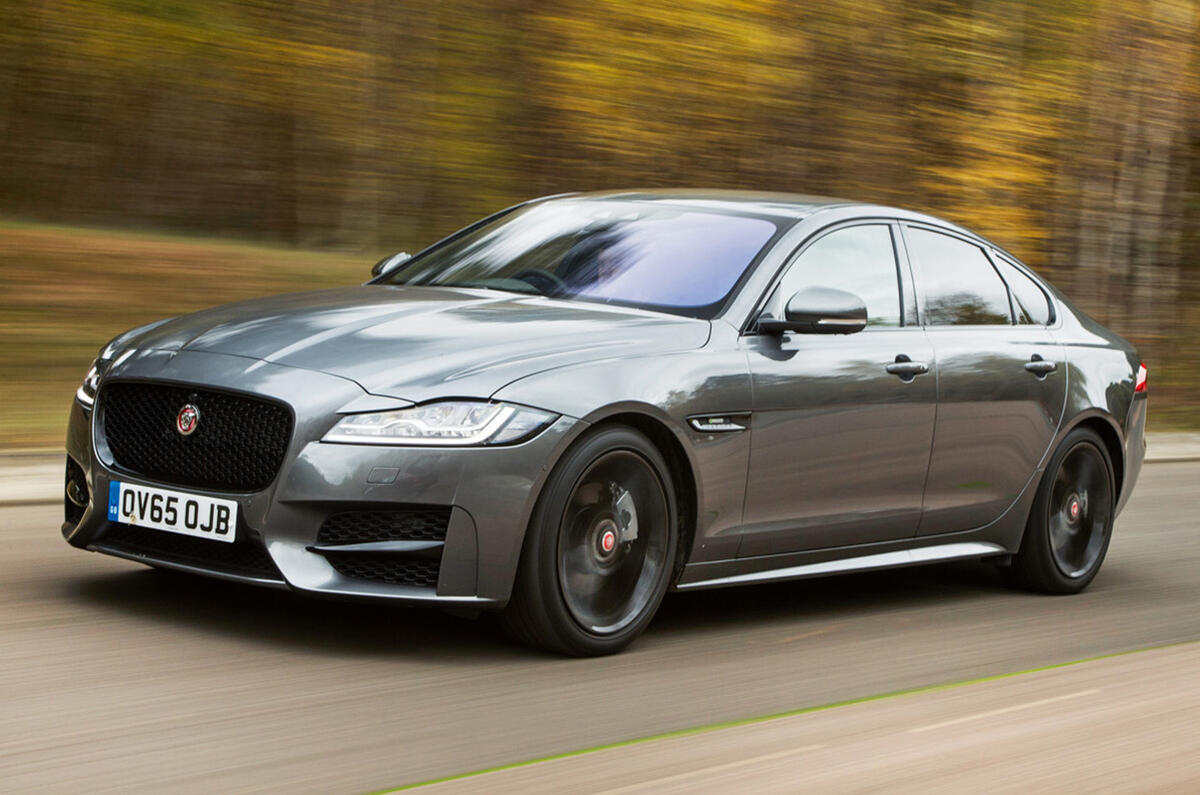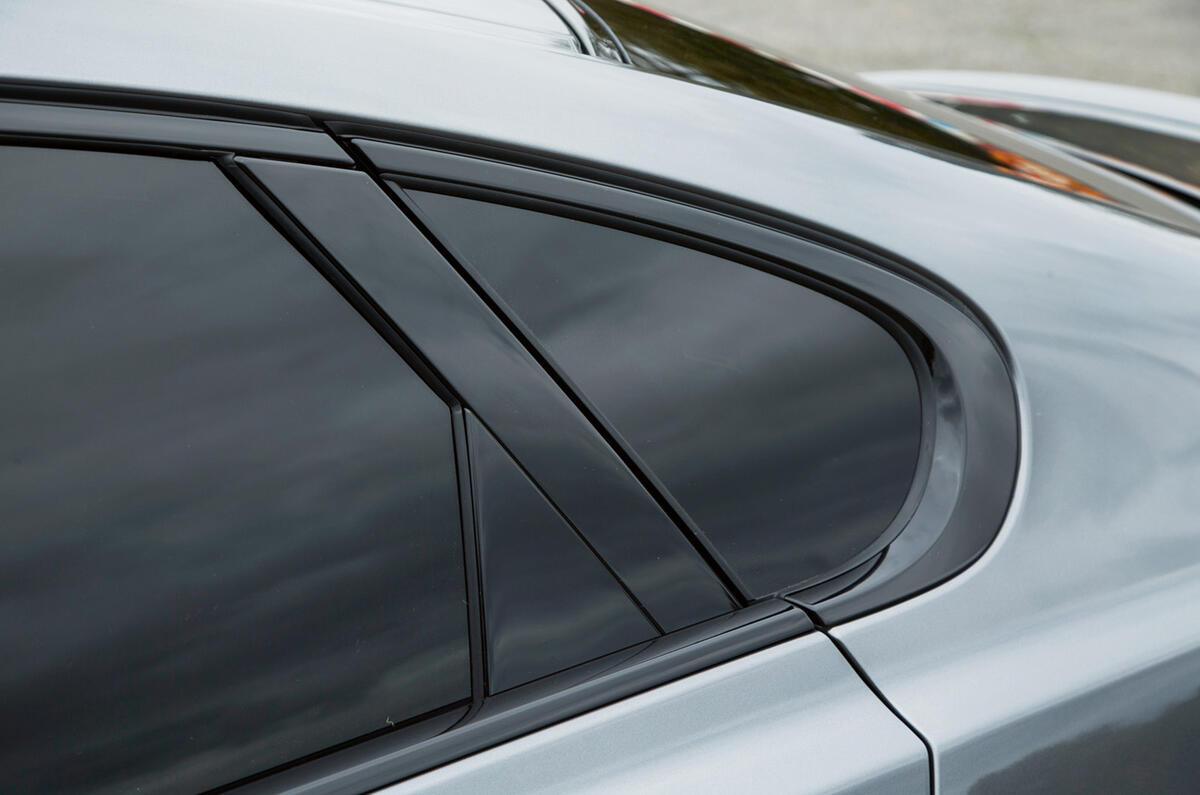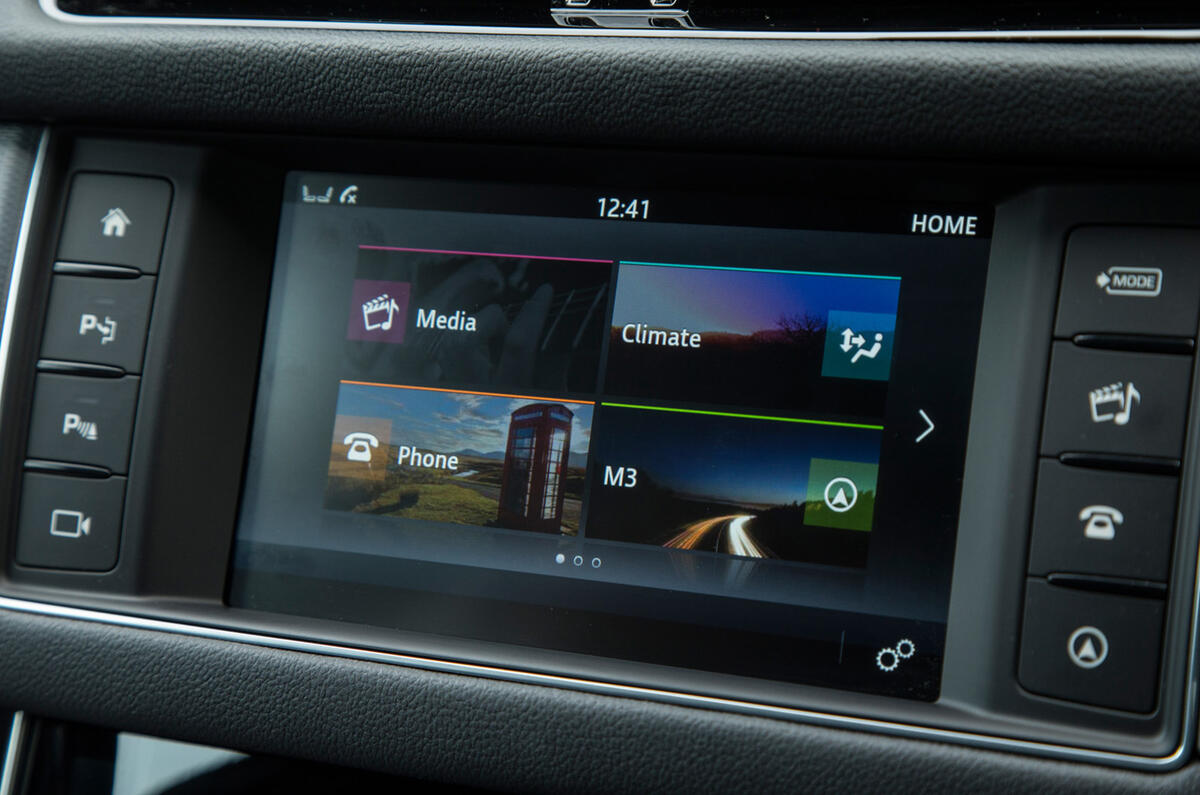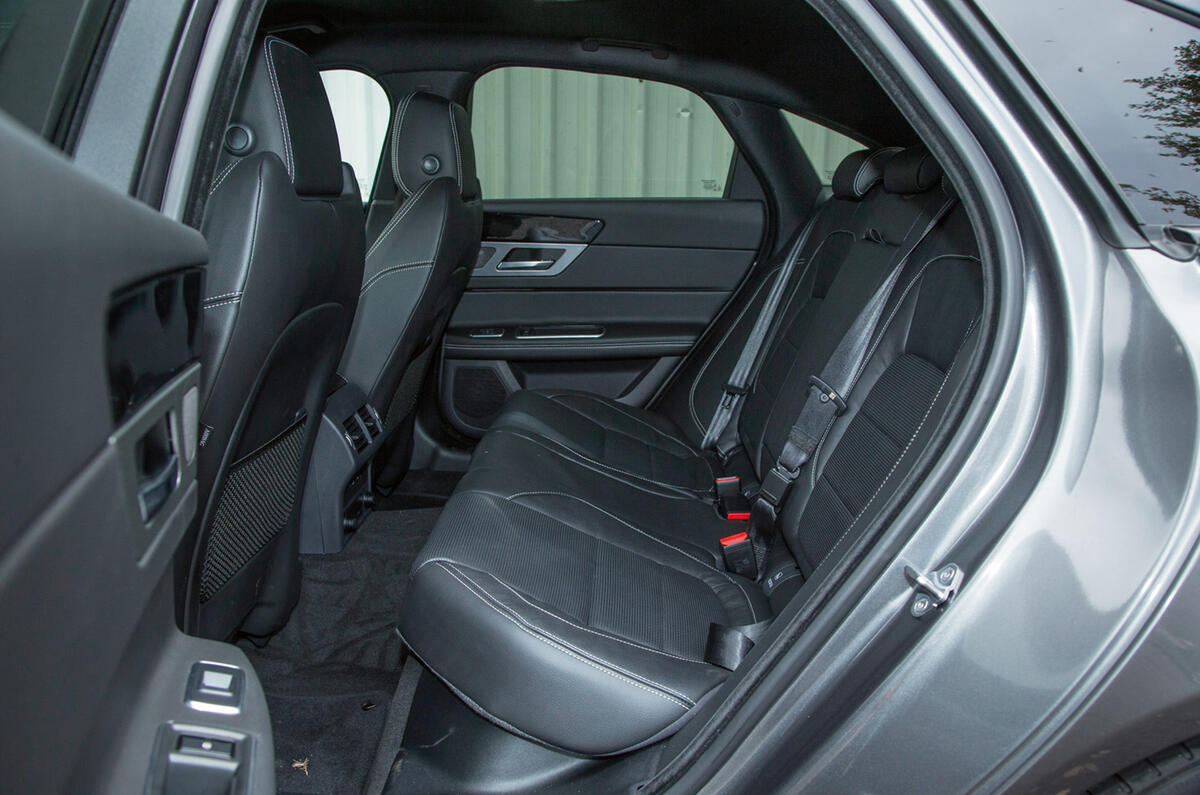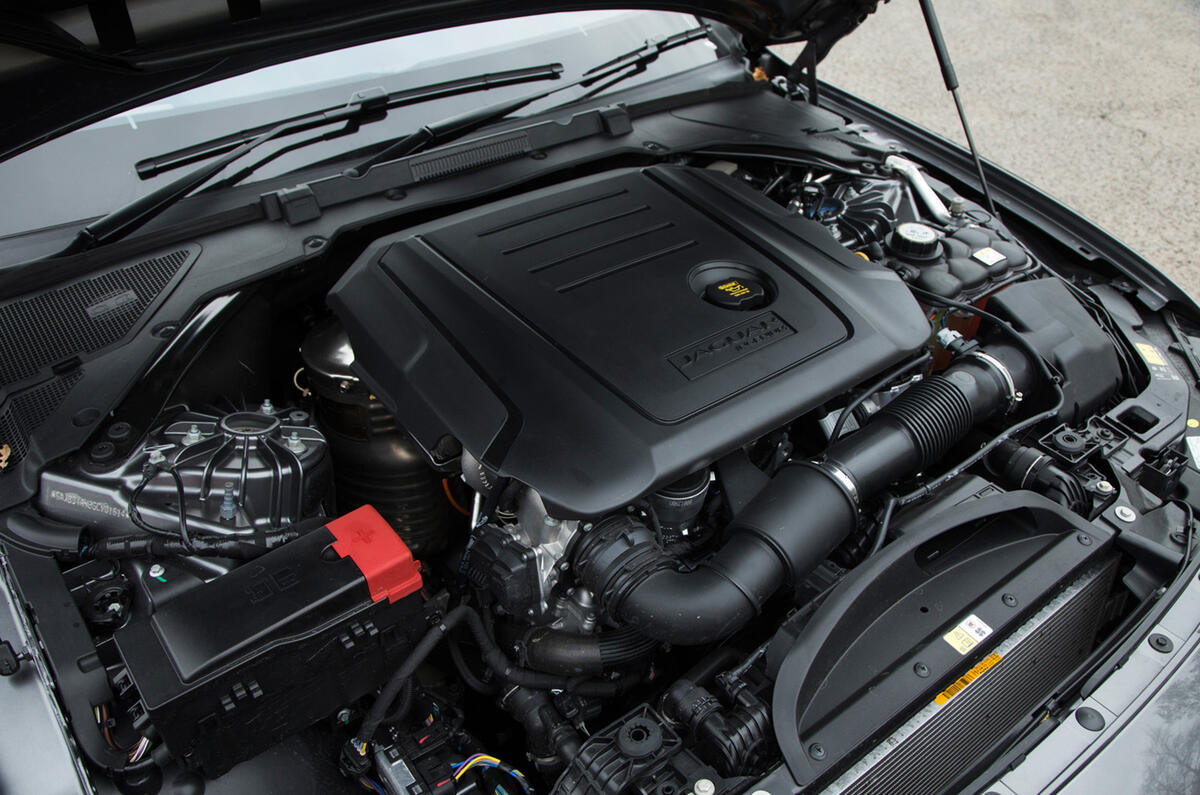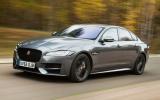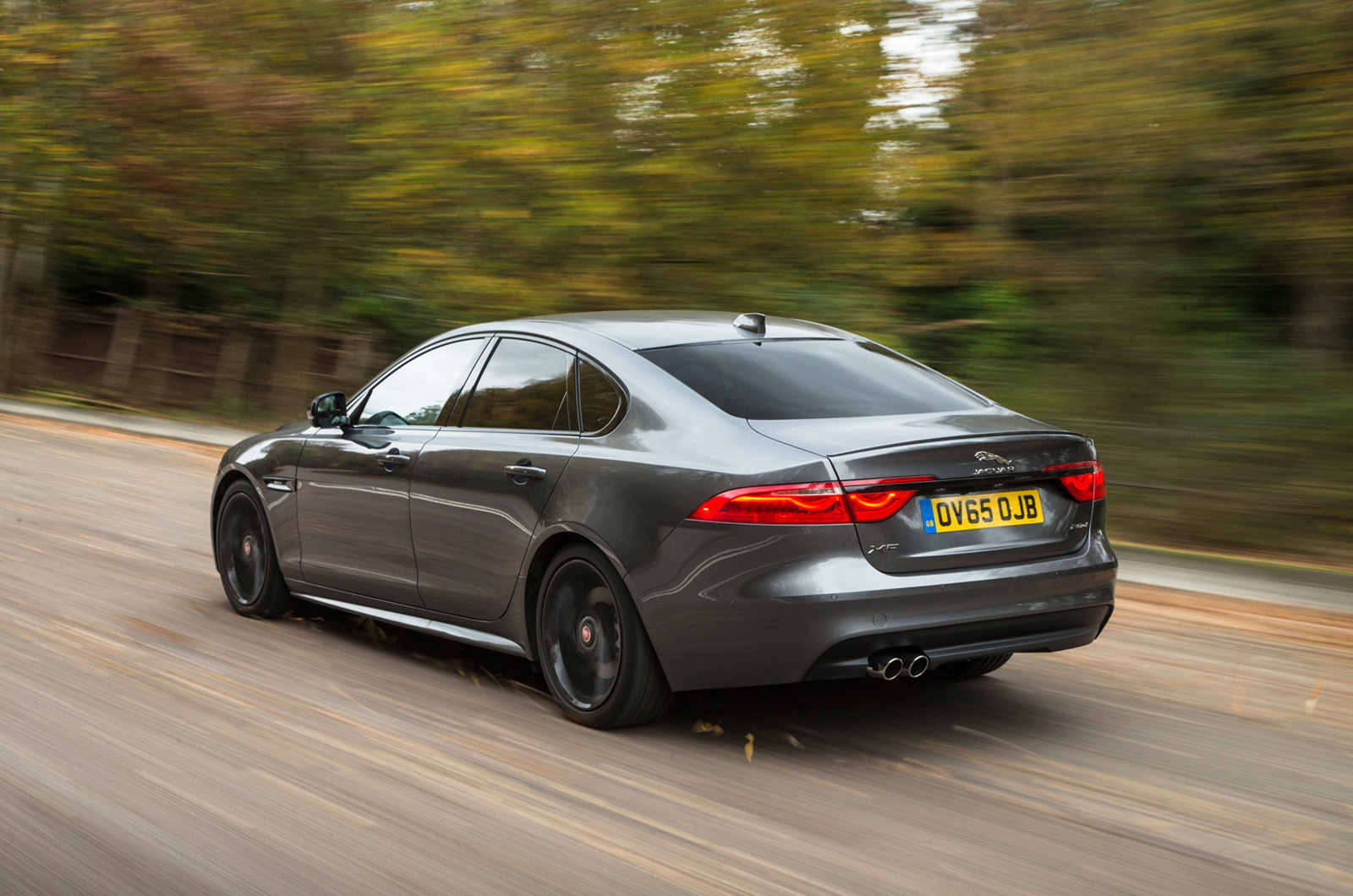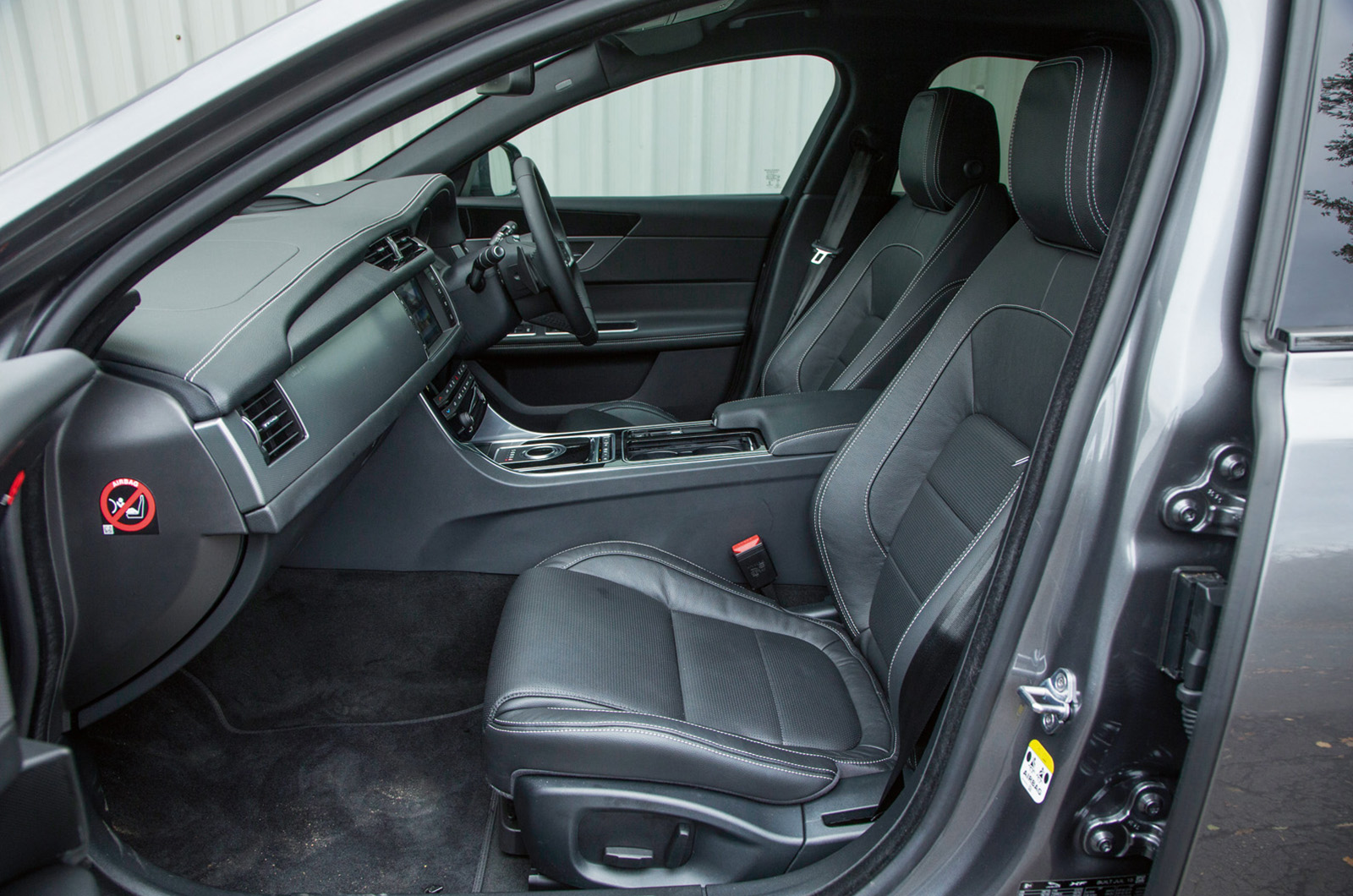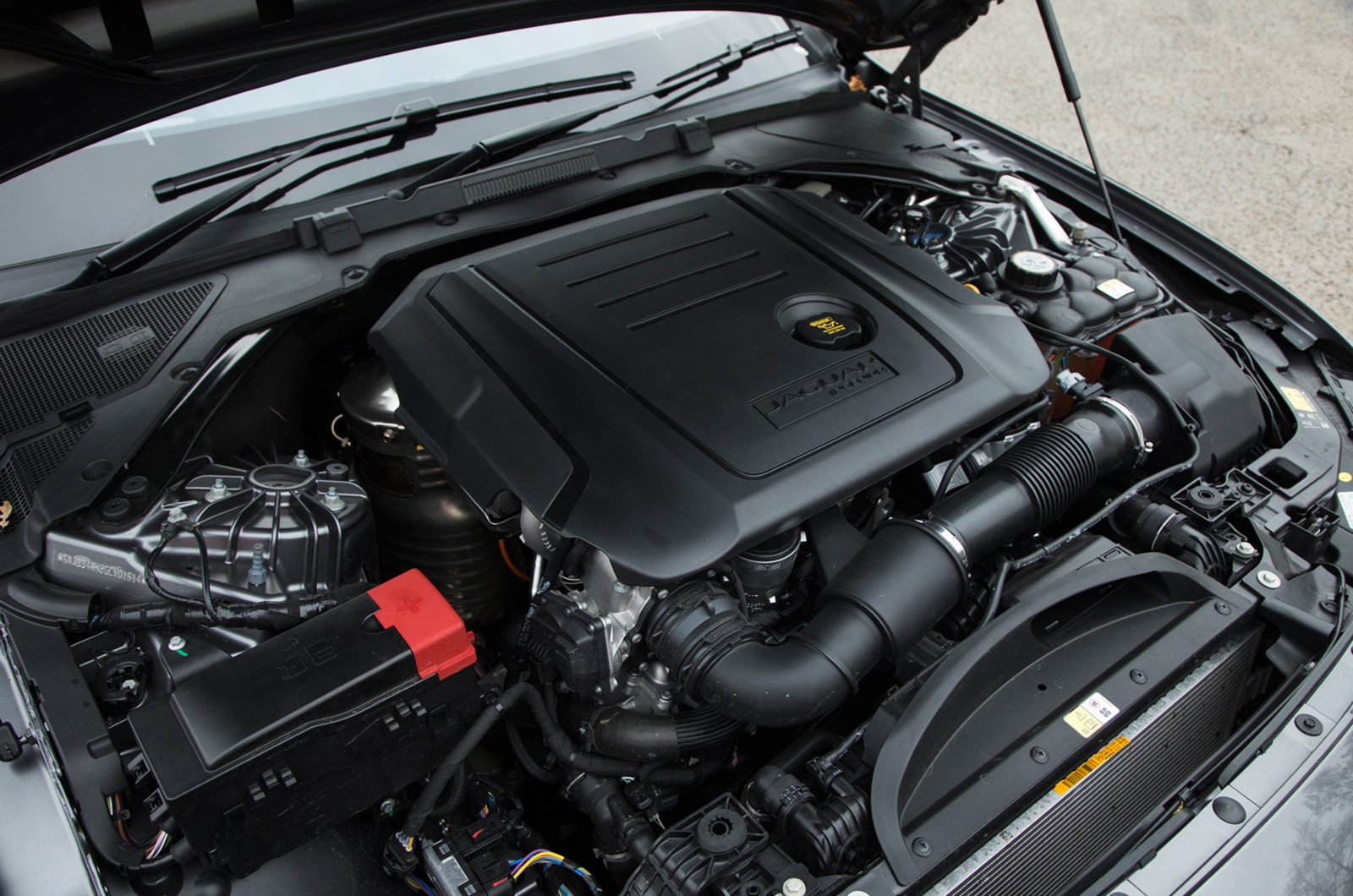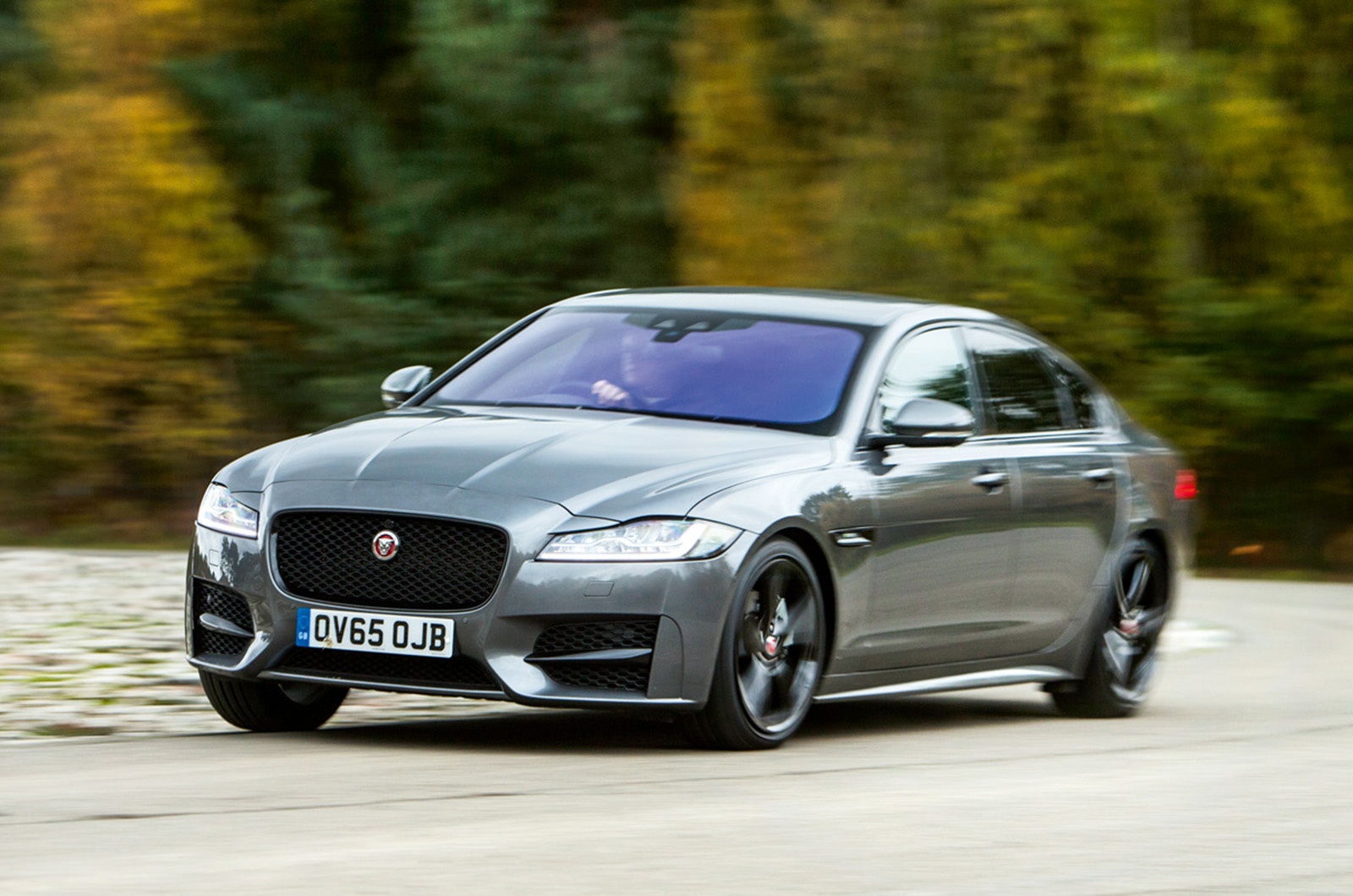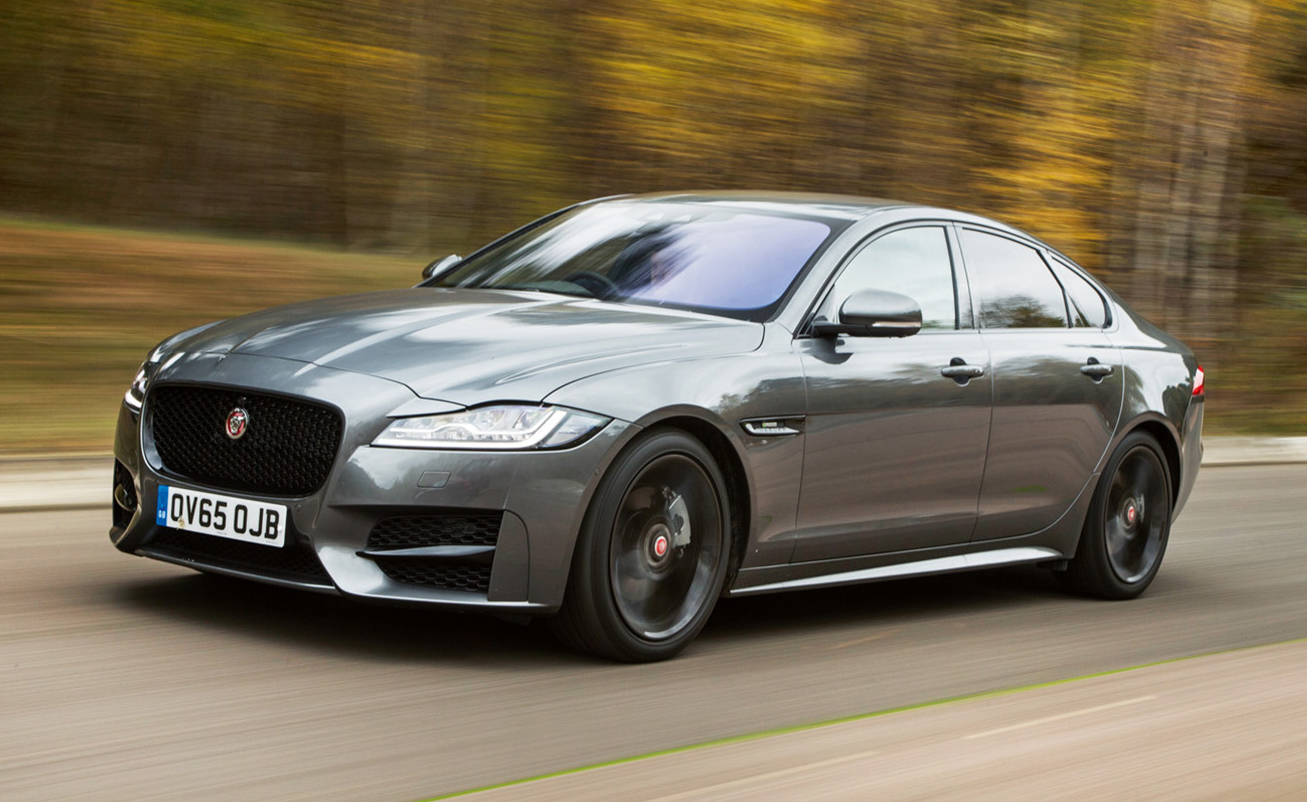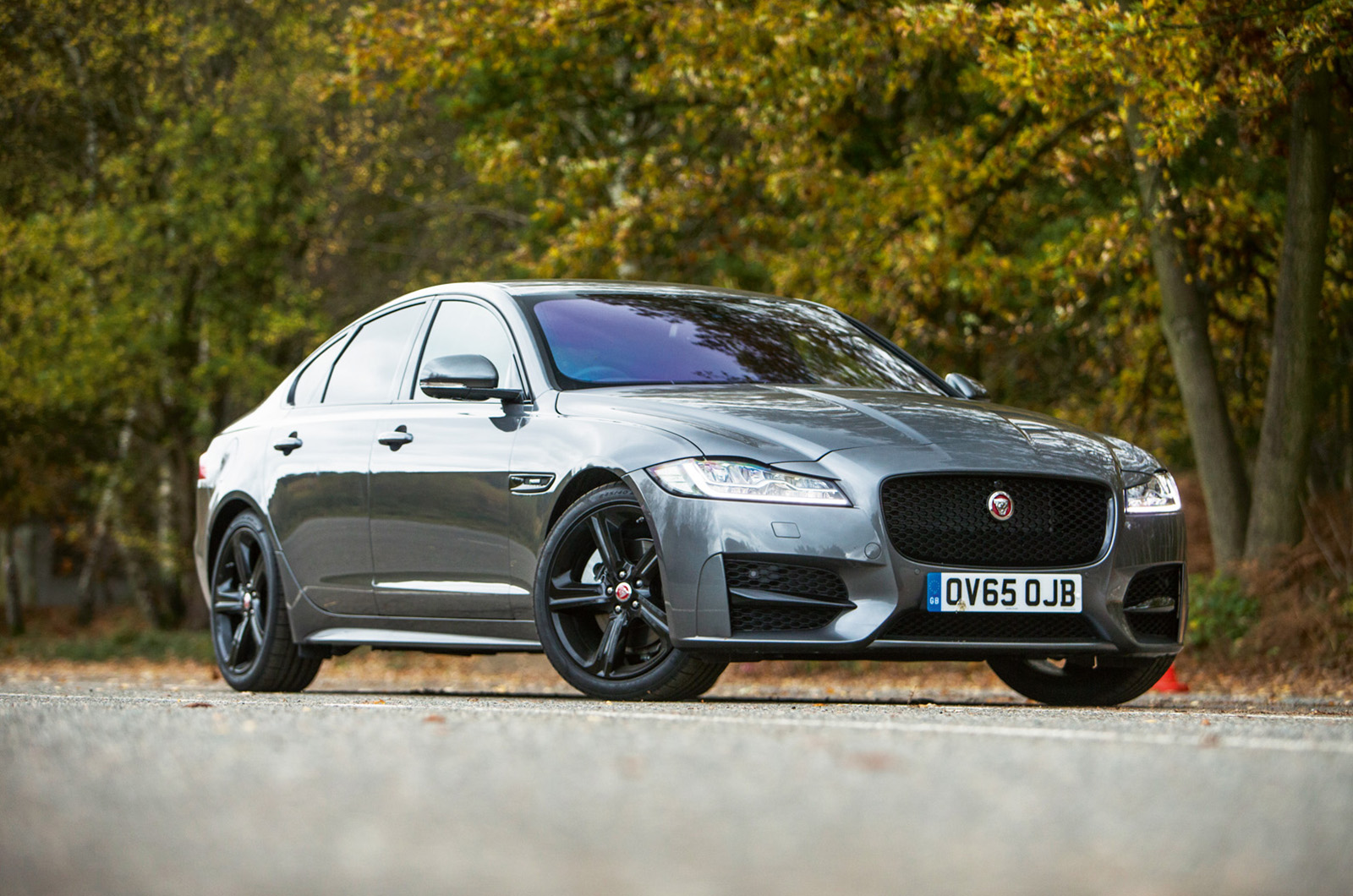If you were looking for evidence that the new XF is intended as a cagey evolution of the old, its cabin provides it.
Like the Jaguar XE, this is now a Jaguar suited and booted primarily for business. The firm’s natural proclivity for flair, one feels, has this time been kept mercilessly in check and the bottom line ruthlessly adhered to in all corners.
This hasn’t inhibited a drastic improvement in fit and finish, but the plastics aren’t uniformly impressive. The end result is not in the same league as a high-spec Audi A6 – which mingles luxury and premium finishes about as well as it’s possible to do – but it still manages to evince an upmarket and purposeful sense of style.
Several items – the peekaboo vents, the gear selector dial, the phosphor blue ambient lighting – are firmly established XF traits. Others – the air-con switchgear and the infotainment – are recognisable carryovers from the XE. The cabin’s size, though, is clearly all new and appreciably better than before.
The previous XF traded a little too keenly on the concept of a snug, sporting saloon, the rear ultimately feeling more cramped the longer you spent in it.
The new model, with its roofline and wheelbase tweaked in the right directions, conveys a more liberal sense of space, certainly in comparison with the XE. This stops short of outright capaciousness – as it must, the XJ being Jaguar’s back-seat pantheon – but with 24mm more room for knees and 15mm more for legs, adults ought to feel markedly less shortchanged if they’re consigned to the rear.
Only those equipped with unsportingly long thigh bones might still feel their knees are unreasonably close to the seat in front, and that could be said of almost every contender in the class.
Anyone given to grumbling about boot space will need to be even more scrupulous, because there looks to be a lot of it, added in no small measure by the potential to fold the rear seats flat, thus creating more than two metres of shallow load length. The new XF Sportbrake increases the space available to owners, with the estate capable of carrying 25 litres more than the saloon and almost as much as its closest rival - the BMW 5 Series Touring.
The first XF made great play of its infotainment set-up, the centre-stack touchscreen being an integral part of Jaguar’s brave new world. Unfortunately, like a shopping trolley in a canal, the system remained still while the technology swiftly improved around it, meaning it had become distinctly clunky well before the model was finally retired.
Its replacement, also used in other Jaguar Land Rover models, comes in two formats: the 8.0in InControl Touch (as tested) and the 10.2in InControl Touch Pro, which removes physical shortcut buttons entirely and comes equipped with a quad-core processor. The Touch Pro system also equips the XF with a virtual instrument cluster, similar to those made prevalent on the latest Audis, Volkswagens Mercedes-Benzes and BMWs.
Even the more basic set-up is a marked improvement on its predecessor, with a more intuitive menu system and a drastically enhanced appearance. Although insufficient to earn it class-leading status (BMW and Audi produce much slicker infotainment software), the XF at least now seems to be keeping pace with its rivals rather than getting left behind.
There are four trim levels to choose from for the Jaguar XF - Prestige, Portfolio, R-Sport and S, split in two categories - Luxury and Sport. The entry-level Luxury models, also known as Presitge, get 17in alloy wheels, bi-xenon headlights, a leather upholstery, electrically adjustable and heated front seats, rear parking sensors and Jaguar's InControl Touch infotainment system complete with Jaguar's standard 80W audio system.
Upgrade to Portfolio and your XF gets more luxuries such as 18in alloy wheels, Windsor-clad leather upholstery, more electrical front seat adjustment, gloss veneer, split foling rear seats, a heated windscreen, keyless entry, front parking sensors and a reversing camera, as well as a 380W Meridian sound system. Opt for the R-Sport trim and the XF gains a sporty bodykit, sports suspension, black headlining, front parking sensors and lots of exterior gloss black trim on top of the Prestige trim, while the range topping S models get 19in alloy wheels, a more aggressive bodykit, red brake calipers, keyless entry, a 380W Meridian sound system, a reversing camera and adaptive dampers added to the package.
Those opting for the Sportbrake will also gain some roof rails, a rear spoiler, rear self levelling air suspension, a powered tailgate and a 40:20:40 split folding rear seats.


